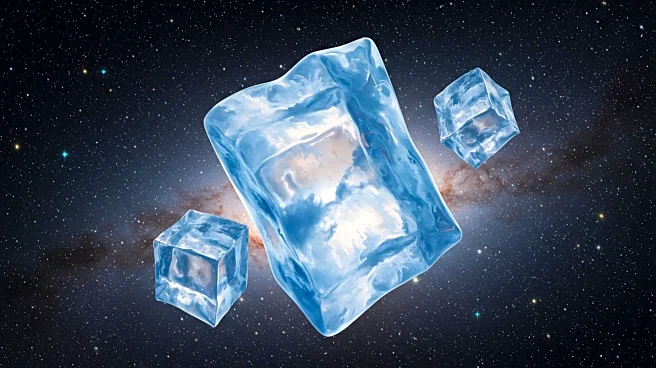Rapid Read • 8 min read
Astronomers have identified a giant planet, TOI-6894b, orbiting a small red dwarf star, TOI-6894, which is only one-fifth the mass of the Sun. Despite the star's diminutive size and low brightness, TOI-6894b is larger than Saturn but has only half its mass. This discovery challenges existing theories that small stars cannot form or sustain large gas planets. The planet was detected using data from the Transiting Exoplanet Survey Satellite (TESS). The star, TOI-6894, is cooler and dimmer than the Sun, yet it hosts a gas giant with a radius larger than Saturn. This finding suggests that large planets may be more common around small stars than previously thought, prompting a reevaluation of planet formation theories.
AD
The discovery of TOI-6894b has significant implications for astronomy, particularly in understanding planet formation. Traditional theories, such as core accretion, suggest that low-mass stars have insufficient gas and dust to form large planets. However, TOI-6894b's existence indicates that alternative processes, like gravitational instability, might be at play. This challenges the assumption that small stars cannot host giant planets and suggests that such planets may be more prevalent in the Milky Way than previously believed. The findings could lead to a broader understanding of planetary systems and their diversity, impacting future research and exploration.
The James Webb Space Telescope (JWST) is set to observe TOI-6894b, focusing on its atmosphere, which is expected to be rich in methane and possibly ammonia. This observation will provide valuable data to understand the planet's formation and atmospheric composition. The research could offer insights into planet formation in environments different from our solar system, potentially refining existing models and theories. Continued study of TOI-6894b and similar discoveries will help scientists improve their understanding of planetary systems and their formation processes.
The discovery of TOI-6894b around a small red dwarf star highlights the need for revisiting and possibly revising existing planet formation models. It underscores the complexity and diversity of planetary systems, suggesting that the universe may host a wider variety of planets than previously thought. This could lead to new approaches in searching for exoplanets and understanding their potential for hosting life.
AD
More Stories You Might Enjoy










